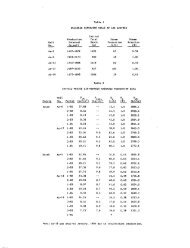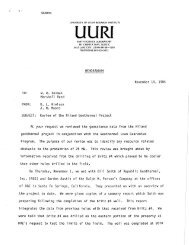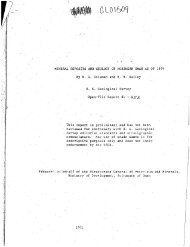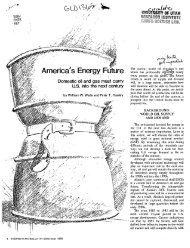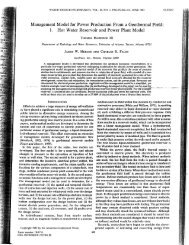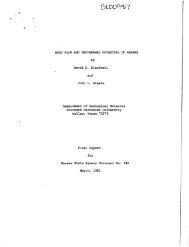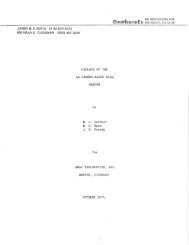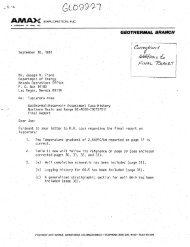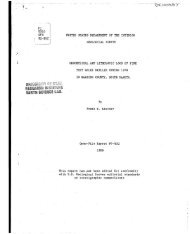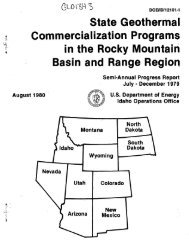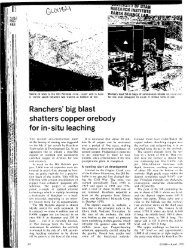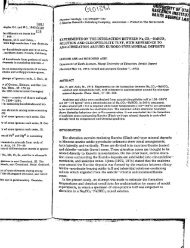"INDUCED POLARIZATION DATA AT ... - University of Utah
"INDUCED POLARIZATION DATA AT ... - University of Utah
"INDUCED POLARIZATION DATA AT ... - University of Utah
You also want an ePaper? Increase the reach of your titles
YUMPU automatically turns print PDFs into web optimized ePapers that Google loves.
laboratory during the years <strong>of</strong> 1978 and 1979.<br />
CHU<br />
The geothermal system chosen for this study was the Roosevelt Hot<br />
Springs Known Geothermal Resource Area (KGRA) (Figure 1). This area<br />
contains a structurally controlled, hot-water dominated system in<br />
plutonic and metamorphic rock (Nielson et al, 1978). Oetailed<br />
geological, geochemical and geophysical work has led to the development<br />
<strong>of</strong> a complete case study <strong>of</strong> the area (Ward et al, 1978). Extensive<br />
electrical data have been gathered involving 100 m, 300 m, and 1 km<br />
dipole-dipole resistivity, Schlumberger resistivity, electromagnetic,<br />
and magnetotelluric soundings. In addition, controlled source audio<br />
magnetotelluric, bipole-dipole resistivity, telluric ratio, and self<br />
potential surveys have been conducted. The geology <strong>of</strong> the area is<br />
summarized by Ward et al (1978); detailed geology is given by Nielson et<br />
al (1978). Research in this region continues to the present.<br />
Induced polarization in the frequency domain is a phenomenon<br />
whereby resistivity changes as a function <strong>of</strong> frequency. This effect is<br />
produced by the presence <strong>of</strong> clays, zeolites, conductive oxides and<br />
conductive sulfides. In the Roosevelt Hot Springs thermal area,<br />
extensive hydrothermal alteration has produced clays, pyrite and<br />
marcasite (Parry et al, 1978; Ballantyne and Parry, 1978). A monitoring<br />
<strong>of</strong> the IP phenomena due to these alteration minerals might allow us to<br />
map the zones <strong>of</strong> alteration. Our study was conducted to assess this<br />
possibility.<br />
We present our results in three sections. Laboratory data are<br />
given first, with schematic explanations <strong>of</strong> the possible reasons behind<br />
the IP behavior <strong>of</strong> hydrothermally altered rocks. Data from the field<br />
survey follow, and we discuss the methods available to remove inductive



